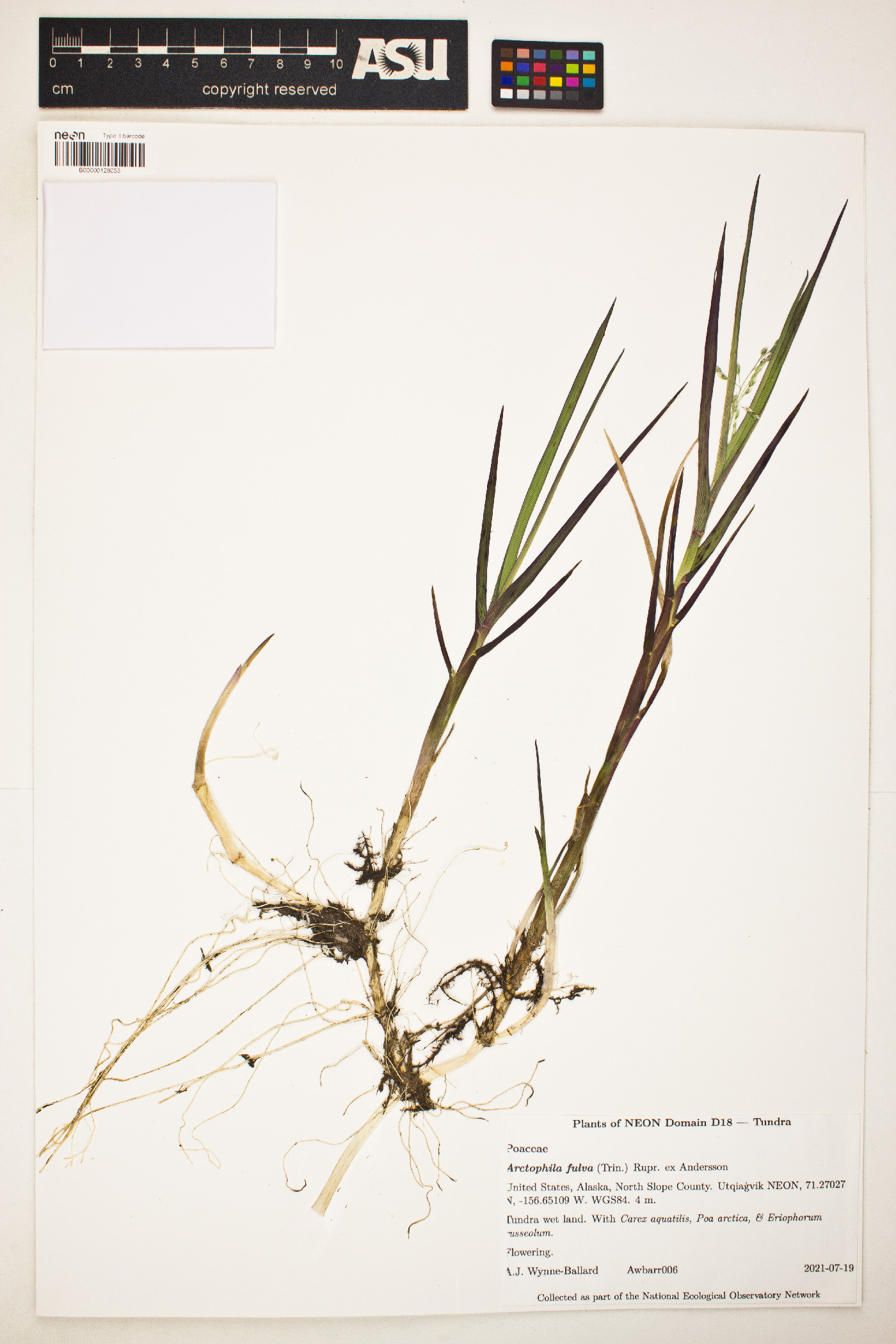Culms (5)10-80(100) cm. Ligules (1)2-6(8) mm; blades 2-23
cm long, 1-5(10) mm wide. Panicles 3-20 cm long, (1.5)3-11 cm wide. Spikelets 2.5-7(8)
mm; florets (1)2-7(9). Glumes 1.5-4(5) mm; lower glumes exceeded
by the lowest floret; upper glumes shorter to longer than the lowest
floret; lemmas 2.5-4 mm; paleas (1)1.8-4 mm; anthers 1.2-3
mm. Caryopses 1.5-2.2 mm. 2n = 42, 63.
Arctophila fulva grows as an emergent species in shallow, standing
water or along slow-moving streams, wet meadows, marshes, and saturated
soils of low arctic and subarctic regions, where it often forms pure stands.
It is one of the few grasses that develop aquatic leaves. Field observations
indicate that under some environmental conditions, A. fulva can
propagate vegetatively from detached stems that have over-wintered (Aiken
and Buck 2002). In the Flora region, it grows from Alaska through
the Yukon, Northwest Territories, Nunavut, Ontario, Quebec, and Labrador
to Greenland. Its range extends across Eurasia to arctic Scandinavia. It
forms a sterile hybrid, ×Arctodupontia scleroclada,
with Dupontia fisheri.


